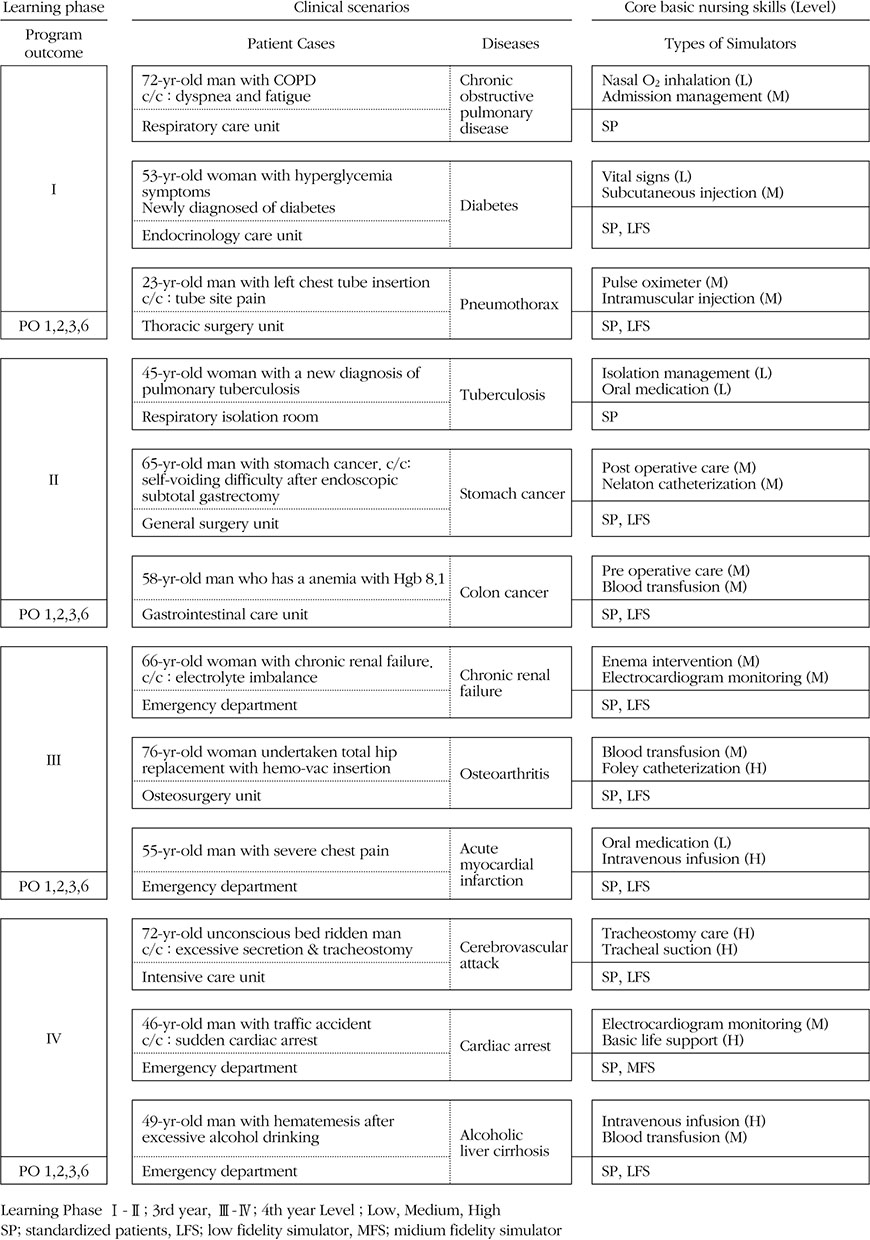1Graduate School of Hanyang University, Seoul, Korea.
2College of Nursing, Hanyang University, Seoul, Korea.
© 2014 Korean Society of Adult Nursing


PO 1=Apply integrated nursing skills to patient care based on liberal education and nursing knowledge; 2=Select and apply core basic nursing skills properly to nursing situation; 3=Apply therapeutic communication skills to clients with verbal and non-verbal interaction; 6=Apply critical thinking-based nursing process and perform clinical reasoning skills.



Evaluation Criteria; High≥24, Moderate 11~23, and Low≤10 points out of 30 points; Distr.=distribution.
PO 1=Apply integrated nursing skills to patient care based on liberal education and nursing knowledge; 2=Select and apply core basic nursing skills properly to nursing situation; 3=Apply therapeutic communication skills to clients with verbal and non-verbal interaction; 6=Apply critical thinking-based nursing process and perform clinical reasoning skills.
Evaluation Criteria; High≥24, Moderate 11~23, and Low≤10 points out of 30 points; Distr.=distribution.
PO 1=Apply integrated nursing skills to patient care based on liberal education and nursing knowledge; 2=Select and apply core basic nursing skills properly to nursing situation; 3=Apply therapeutic communication skills to clients with verbal and non-verbal interaction; 6=Apply critical thinking-based nursing process and perform clinical reasoning skills.